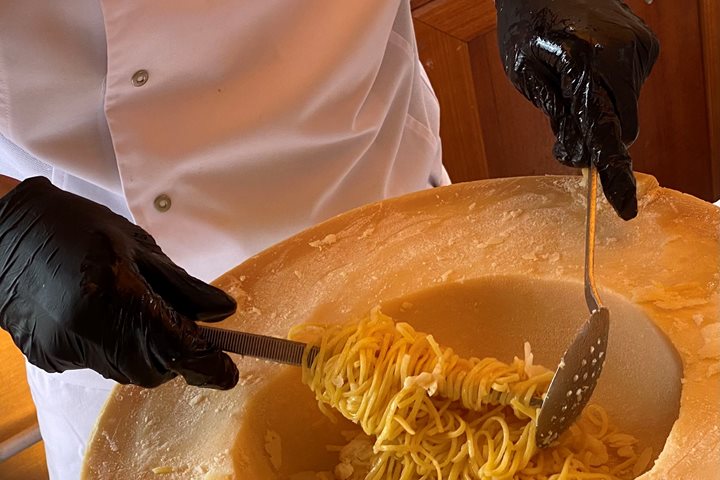We were up before the sun and boarded our coach for Seville at 8AM. The drive of 90 minutes passed by rich agricultural fields of wheat, olives, and a variety of vegetables. Seville is strategically situated on the Guadalquivir River and has access to the sea. Its population is approximately 700,000 and it is the capital of the autonomous province of Andaluisa.
The region takes its name from the Vandals, an eastern European tribe who migrated here. The Moors on their arrival called the place Al Andalus, referring of course to the Vandals. As we drove into Seville, we were saw some aspects of the great post-Easter fiesta, La Feria de Abril. Elaborately decorated carriages pulled by the most magnificent horses paraded up and down the boulevard. The passengers were dressed in period costumes. Some of the men wore top hats and tails and the women were dressed in elaborate – what I would call “flamenco” dress – long close-fitting dresses with ruffled bottoms and elaborate flowers and colorful bows in their hair.
Our walking tour took us through some lovely parks, and we stopped to admire the very important “Archives of the Indies.” It houses all the important documents from the exploration of the American continent by the Spanish and is an invaluable resource for historians. Our first stop in the historic district was the Alcázar (or Royal Fortress). This palace was originally built by the Almohades – a ruling Muslim family – in the middle of the 12th century, but little remains of that period. The Christian King Peter 1 was fond of Moorish architectural styles and incorporated them into his new construction. And so the present palace combines elements of Moorish and Christian architectural styles.
Our first visit was the beautiful “Palace of Justice.” The elaborate wooden ceiling in the Justice Chamber was a wonder. Perhaps the most wonderful room in the Alcázar is the justly famous Hall of the Ambassadors. The room is a square and its walls are covered with stunning tiles and each of the four walls has three of the Muslim horseshoe arches. Elaborate plaster work covers virtually every inch not covered by tiles. The door frames are filled with elaborate Arabic script (known as “kufic”) and function as decorative items. The ceiling of this hall is a massive ornate plaster dome from the 15th century. One can imagine an ambassador being received in this room and feeling the power and wealth as they waited on the King and his ministers. The gardens in the palace are places of refreshment and repose and are filled with plants and trees from the Americas.
We had a large tapas luncheon at a famous local restaurant, and close by was our next historic stop the “Hospital for Venerable (Old) Priests.” This is a type of 17th century assisted living facility for retired priests. The highlight of our visit to this beautiful structure was the elaborate chapel, every inch of which was covered with frescoes, and the art gallery had stunning paintings including a Crucifixion by El Greco, a Velasquez of Saint Rufina, and a Murillo of Saint Peter.
Cocktails and dinner completed what could not have been a more satisfying day.









